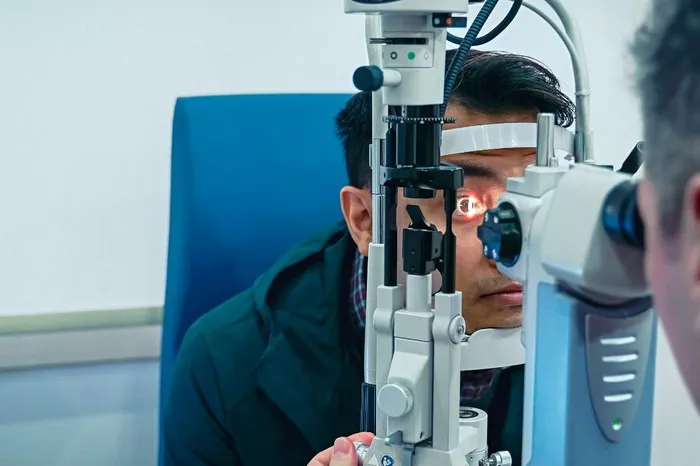Lens replacement surgeries, also known as lens exchange surgeries, are performed to address various vision problems and conditions. These surgeries are crucial in restoring vision and improving the quality of life for patients with conditions such as cataracts, presbyopia, and certain forms of myopia and hyperopia. This article will explore 5 types of lens replacement surgeries, detailing their indications, procedures, benefits, and potential risks.
1. Cataract Surgery
Introduction
Cataract surgery is one of the most common and effective lens replacement procedures. It involves the removal of the eye’s natural lens, which has become cloudy due to cataracts, and replacing it with an artificial intraocular lens (IOL).
Indications
Cataract surgery is indicated for patients with:
Significant vision impairment due to cataracts.
Difficulty performing daily activities.
Diminished quality of life due to cloudy vision.
Procedure
The standard procedure for cataract surgery involves:
Preoperative Assessment: A thorough eye examination to assess the severity of the cataract and determine the appropriate IOL.
Anesthesia: Local anesthesia is administered to numb the eye.
Incision: A small incision is made in the cornea.
Lens Removal: The cloudy lens is broken up using ultrasound waves (phacoemulsification) and removed from the eye.
IOL Insertion: The artificial lens is inserted through the same incision and positioned in the lens capsule.
Closure: The incision is self-sealing and typically does not require stitches.
Benefits
Restoration of clear vision.
Improved quality of life.
High success rate and low complication risk.
Risks
Infection.
Inflammation.
IOL dislocation.
Posterior capsule opacification.
See Also: 7 Reasons for Cloudy Eyes After Cataract Surgery
2. Refractive Lens Exchange (RLE)
Introduction
Refractive lens exchange, also known as clear lens extraction or refractive lensectomy, is a procedure to replace the eye’s natural lens with an IOL to correct refractive errors such as myopia, hyperopia, and presbyopia.
Indications
RLE is suitable for:
Patients with high refractive errors not suitable for LASIK or PRK.
Individuals with early presbyopia who want to reduce dependence on reading glasses.
Procedure
The procedure for RLE is similar to cataract surgery and involves:
Preoperative Assessment: Evaluating the patient’s refractive error and selecting the appropriate IOL.
Anesthesia: Local anesthesia to numb the eye.
Incision: A small corneal incision.
Lens Removal: Phacoemulsification to remove the natural lens.
IOL Insertion: Insertion of a multifocal or accommodating IOL.
Closure: The incision is self-sealing.
Benefits
Correction of high refractive errors.
Reduction or elimination of the need for glasses or contact lenses.
Long-lasting vision improvement.
Risks
Retinal detachment.
Glare and halos around lights.
Infection.
IOL dislocation.
3. Phakic Intraocular Lens (PIOL) Implantation
Introduction
Phakic intraocular lens (PIOL) implantation is a procedure that involves placing an IOL in front of the natural lens to correct refractive errors. This procedure is different from traditional lens replacement as the natural lens remains in place.
Indications
PIOL is indicated for:
Patients with high myopia or hyperopia.
Individuals who are not candidates for corneal refractive surgery.
Procedure
The PIOL implantation procedure involves:
Preoperative Assessment: Detailed eye examination and measurement of eye structures.
Anesthesia: Local anesthesia to numb the eye.
Incision: A small incision is made in the cornea.
PIOL Insertion: The phakic IOL is inserted through the incision and positioned in front of the natural lens.
Closure: The incision is typically self-sealing.
Benefits
High correction of refractive errors.
Preservation of the natural lens and accommodation.
Reversible procedure.
Risks
Infection.
Inflammation.
IOL misalignment.
Increased intraocular pressure.
4. Secondary Intraocular Lens Implantation
Introduction
Secondary intraocular lens implantation is performed when an initial IOL is dislocated, removed, or requires replacement due to complications.
Indications
Secondary IOL implantation is necessary for:
Dislocated or subluxated primary IOL.
Complications from previous cataract or lens replacement surgery.
Inadequate visual outcomes from primary IOL.
Procedure
The secondary IOL implantation procedure involves:
Preoperative Assessment: Comprehensive evaluation of the eye and existing IOL.
Anesthesia: Local anesthesia to numb the eye.
Removal of Existing IOL: If necessary, the dislocated or problematic IOL is removed.
Secondary IOL Insertion: A new IOL is inserted into the appropriate position, often in the ciliary sulcus or fixated to the sclera.
Closure: The incision is closed, usually without stitches.
Benefits
Restoration of visual function.
Correction of previous surgical complications.
Improvement in quality of life.
Risks
Infection.
Inflammation.
Retinal detachment.
IOL dislocation.
5. Scleral-fixated Intraocular Lens (SFIOL) Implantation
Introduction
Scleral-fixated intraocular lens (SFIOL) implantation is a specialized procedure for patients who cannot have an IOL placed in the natural lens capsule due to damage or absence of the capsule.
Indications
SFIOL is indicated for:
Patients with no capsular support due to trauma, congenital conditions, or previous surgeries.
Complicated cataract surgery cases.
Procedure
The SFIOL implantation procedure involves:
Preoperative Assessment: Detailed examination and measurement of eye structures.
Anesthesia: Local or general anesthesia to ensure patient comfort.
Incision: A scleral tunnel incision is made.
Scleral Fixation: The IOL is sutured to the sclera using special techniques to ensure stable positioning.
Closure: The incision is closed with sutures.
Benefits
Restoration of vision in complex cases.
Stable IOL positioning.
Long-term visual improvement.
Risks
Infection.
Inflammation.
Suture-related complications.
IOL dislocation.
Conclusion
Lens replacement surgeries are vital for addressing various vision problems, from cataracts to high refractive errors. Each type of surgery has specific indications, benefits, and risks. Understanding these aspects helps ophthalmologists and patients make informed decisions about the most suitable procedure. With advancements in surgical techniques and IOL technology, the outcomes of these surgeries continue to improve, offering patients better vision and enhanced quality of life.
Related topics:

